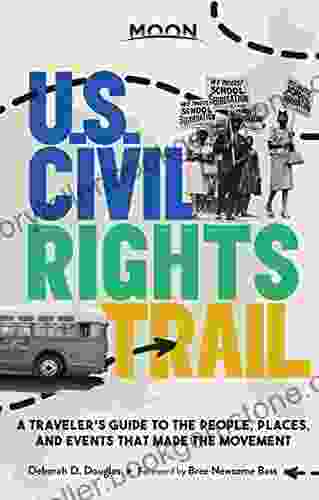The American Indian Movement (AIM) emerged in the late 1960s as a response to the systemic oppression and discrimination faced by Native American communities in the United States. One of the key battlegrounds in AIM's struggle was the issue of land rights, particularly the reservation lands that had been granted to Native American tribes by treaty.
In the early 1970s, AIM launched a series of protests and occupations to draw attention to the plight of Native Americans and to demand the return of their stolen lands. These protests, known as the "Ghost Rider Roads," were often met with violence and suppression by law enforcement, but they also helped to raise awareness of the issues facing Native American communities and to galvanize support for their cause.
4.8 out of 5
| Language | : | English |
| File size | : | 36590 KB |
| Text-to-Speech | : | Enabled |
| Screen Reader | : | Supported |
| Enhanced typesetting | : | Enabled |
| Word Wise | : | Enabled |
| Print length | : | 508 pages |
The Ghost Rider Roads
The Ghost Rider Roads were a series of protests and occupations that were organized by AIM between 1971 and 2024. These protests were targeted at the federal government and various state governments, and they called for the return of stolen lands, the recognition of Native American treaty rights, and an end to the discrimination and oppression faced by Native Americans.
The protests were often led by Dennis Banks, Russell Means, and Clyde Bellecourt, who were known as the "AIM Triumvirate." Banks, Means, and Bellecourt were all charismatic leaders who were able to inspire and mobilize Native American communities to take action.
The Ghost Rider Roads were often met with violence and suppression by law enforcement. In 1973, for example, AIM activists were involved in a shootout with police officers at Wounded Knee, South Dakota, which resulted in the deaths of two activists and one police officer.
Despite the violence and suppression, the Ghost Rider Roads were a significant success. They helped to raise awareness of the plight of Native Americans and to galvanize support for their cause. They also helped to bring about a number of important changes in federal policy, including the Indian Self-Determination and Education Assistance Act of 1975 and the American Indian Religious Freedom Act of 1978.
The Legacy of the Ghost Rider Roads
The Ghost Rider Roads were a pivotal moment in the history of the American Indian Movement. They helped to raise awareness of the plight of Native Americans and to galvanize support for their cause. They also helped to bring about a number of important changes in federal policy.
The legacy of the Ghost Rider Roads continues to inspire Native American activists today. The protests helped to lay the foundation for the modern Indian rights movement, and they continue to serve as a reminder of the importance of fighting for land, rights, and recognition.
The American Indian Movement (AIM) was a pivotal moment in the history of Native American civil rights. The protests and occupations known as the "Ghost Rider Roads" were a key part of AIM's struggle, and they helped to raise awareness of the plight of Native Americans and to galvanize support for their cause. The legacy of the Ghost Rider Roads continues to inspire Native American activists today and serves as a reminder of the importance of fighting for land, rights, and recognition.

























































































































































































































































































































































































































































































































